Emergency Care (EMT) 13th Edition by Daniel Limmer, ISBN-13: 978-0134024554
Original price was: $50.00.$19.99Current price is: $19.99.
Emergency Care (EMT) 13th Edition by Daniel Limmer, ISBN-13: 978-0134024554
[PDF eBook eTextbook]
- Publisher: Pearson; 13th edition (February 11, 2015)
- Language: English
- 1328 pages
- ISBN-10: 0134024559
- ISBN-13: 978-0134024554
For courses in Emergency Medical Technician Training and Emergency Medical Services
Help students think like EMTs with the gold standard for EMT training.
For over 30 years, Emergency Care has provided generations of EMT students with the practical information they need to succeed in the classroom and in the field. Updated with the latest research and developments in emergency medical services, this edition meets the 2010 American Heart Association guidelines for CPR and ECC. Using the National EMS Education Standards as a foundation, Emergency Care goes beyond the Standards to provide the most current, accurate reflection of EMS practice today. The text integrates scientific principles in an easy-to-understand way, with a host of critical-thinking features that help students learn to think like EMTs.
Table of Contents
Emergency Care
Emergency Care
Brief Contents
Detailed Contents
Photo Scans
Visual Guides
Letter to Students
Preface
Section 1 Foundations: Chapters 1–8
Section 2 Airway Management, Respiration, and Artificial Ventilation: Chapters 9–10
Section 3 Patient Assessment: Chapters 11–15
Section 4 Medical Emergencies: Chapters 16–24
Section 5 Trauma: Chapters 25–31
Section 6 Special Populations: Chapters 32–35
Section 7 Operations: Chapters 36–39
Appendixes and References
Our Goal: Improving Future Training and Education
About the People
About the Authors
A Guide to Key Features
Section 1 Foundations
1 Introduction to Emergency Medical Care
Standard
Competency
Core Concept
Key Terms
The Emergency Medical Services System
How It Began
EMS Today
Components of the EMS System
Accessing the EMS System
Levels of EMS Training
Roles and Responsibilities of the EMT
Traits of a Good EMT
Physical Traits
Personal Traits
Education
Where Will You Become a Provider?
National Registry of Emergency Medical Technicians
Quality Improvement
Medical Direction
The EMS Role in Public Health
Research
The Basics of EMS Research
Methods of Reducing Bias
Prospective versus Retrospective
Randomization
Control Groups
Study Group Similarity
Types of Medical Research
Questions to Ask When Evaluating a Research Study
Questions to Ask Before Participating in EMS Research
Special Issues
Chapter Review
Key Facts and Concepts
Key Decisions
Chapter Glossary
Preparation for Your Examination and Practice
Short Answer
Critical Thinking Exercises
2 The Well-Being of the EMT
Related Chapters
Standard
Competency
Core Concepts
Key Terms
Well-Being
Personal Protection
Standard Precautions
Personal Protective Equipment
Protective Gloves
Hand Cleaning
Eye and Face Protection
Masks
Gowns
Diseases of Concern
Emerging Diseases and Conditions
Infection Control and the Law
Occupational Exposure to Bloodborne Pathogens
Ryan White CARE Act
Tuberculosis Compliance Mandate
Immunizations
Emotion and Stress
Physiologic Aspects of Stress
Types of Stress Reactions
Acute Stress Reaction
Delayed Stress Reaction
Cumulative Stress Reaction
Causes of Stress
Signs and Symptoms of Stress
Dealing with Stress
Lifestyle Changes
Critical Incident Stress Management
Understanding Reactions to Death and Dying
Scene Safety
Hazardous Material Incidents
Terrorist Incidents
Rescue Operations
Violence
Plan
Observe
React to Danger
Chapter Review
Key Facts and Concepts
Key Decisions
Chapter Glossary
Preparation for Your Examination and Practice
Short Answer
Thinking and Linking
Critical Thinking Exercises
Pathophysiology to Practice
3 Lifting and Moving Patients
Related Chapters
Standard
Competency
Core Concepts
Key Terms
Protecting Yourself: Body Mechanics
Protecting Your Patient: Emergency, Urgent, and Non-Urgent Moves
Emergency Moves
Urgent Moves
Non-Urgent Moves
Patient-Carrying Devices
Wheeled Stretchers
Stair Chairs
Spine Board
Other Types of Stretchers
Moving Patients onto Carrying Devices
Patient with Suspected Spine Injury
Patient with No Suspected Spine Injury
Patient Positioning
Positioning for Shock
Transferring the Patient to a Hospital Stretcher
Chapter Review
Key Facts and Concepts
Key Decisions
Chapter Glossary
Preparation for Your Examination and Practice
Short Answer
Thinking and Linking
Critical Thinking Exercises
4 Medical/Legal and Ethical Issues
Related Chapters
Standard
Competency
Core Concepts
Scope of Practice
Patient Consent and Refusal
Consent
Expressed Consent
Implied Consent
Children and Mentally Incompetent Adults
Involuntary Transportation
When a Patient Refuses Care
Do Not Resuscitate Orders and Physician Orders for Life-Sustaining Treatment
Other Legal Issues
Negligence
Duty to Act
Good Samaritan Laws
Confidentiality
Special Situations
Medical Identification Devices
Organ Donors
Safe Haven Laws
Crime Scenes
Special Reporting Requirements
Chapter Review
Key Facts and Concepts
Key Decisions
Chapter Glossary
Preparation for Your Examination and Practice
Short Answer
Thinking and Linking
Critical Thinking Exercises
5 Medical Terminology
Related Chapters
Standard
Competency
Core Concepts
Medical Terminology
The Components of Medical Terms
Abbreviations and Acronyms
When and When Not to Use Medical Terms
The language of Anatomy and Physiology
Anatomic Terms
Directional Terms
Positional Terms
Chapter Review
Key Facts and Concepts
Key Decisions
Chapter Glossary
Preparation for Your Examination and Practice
Short Answer
Thinking and Linking
Critical Thinking Exercises
6 Anatomy and Physiology
Related Chapters
Standard
Competency
Core Concept
Locating Body Organs and Structures
Body Systems
Musculoskeletal System
Skull
Spinal Column
Thorax
Pelvis
Lower Extremities
Upper Extremities
Joints
Muscles
Respiratory System
Respiratory Anatomy
Respiratory Physiology
Cardiovascular System
Anatomy of the Heart
Circulation of the Blood
Composition of the Blood
Pulse
Blood Pressure
Perfusion
Life Support Chain
Lymphatic System
Nervous System
Digestive System
Integumentary System
Endocrine System
Renal System
Reproductive System
Male Reproductive System
Female Reproductive System
Chapter Review
Key Facts and Concepts
Key Decisions
Chapter Glossary
Preparation for Your Examination and Practice
Short Answer
Thinking and Linking
Critical Thinking Exercises
7 Ventilation, Perfusion, and Shock: Understanding Pathophysiology
Related Chapters
Standard
Competency
Core Concepts
The Cell
Water and the Cell
Glucose and the Cell
Oxygen and the Cell
The Vulnerability of Cells, Organs, and Organ Systems
The Cardiopulmonary System
The Airway
The Lungs
Respiratory Dysfunction
Disruption of Respiratory Control
Disruption of Pressure
Disruption of Lung Tissue
Respiratory Compensation
The Blood
Blood Dysfunction
The Blood Vessels
Blood Vessel Dysfunction
Loss of Tone
Excessive Permeability
Hypertension
The Heart
Heart Dysfunction
The Cardiopulmonary System: Putting It All Together
Shock
Pathophysiology of Other Systems
Fluid Balance
Disruptions of Fluid Balance
Fluid Loss
Poor Fluid Distribution
The Nervous System
Nervous System Dysfunction
Trauma
Medical Dysfunction
The Endocrine System
Endocrine System Dysfunction
Too Many Hormones
Not Enough Hormones
The Digestive System
Digestive Dysfunction
Gastrointestinal Bleeding
Vomiting and Diarrhea
The Immune System
Hypersensitivity (Allergic Reaction)
Chapter Review
Key Facts and Concepts
Key Decisions
Chapter Glossary
Preparation for Your Examination and Practice
Short Answer
Thinking and Linking
Critical Thinking Exercises
Pathophysiology to Practice
8 Life Span Development
Related Chapters
Standard
Competency
Core Concepts
Infancy (Birth to 1 Year)
Physiological
Psychosocial
Toddler Phase (12–36 Months)
Physiological
Psychosocial
Preschool Age (3–5 Years)
Physiological
Psychosocial
School Age (6–12 Years)
Physiological
Psychosocial
Adolescence (13–18 Years)
Physiological
Psychosocial
Early Adulthood (19–40 Years)
Physiological
Psychosocial
Middle Adulthood (41–60 Years)
Physiological
Psychosocial
Late Adulthood (61 Years and Older)
Physiological
Psychosocial
Chapter Review
Key Facts and Concepts
Key Decisions
Chapter Glossary
Preparation for Your Examination and Practice
Short Answer
Thinking and Linking
Critical Thinking Exercises
Pathophysiology to Practice
Section 2 Airway Management, Respiration, and Artificial Ventilation
9 Airway Management
Related Chapters
Standard
Competency
Core Concepts
Airway Physiology
Airway Pathophysiology
Opening the Airway
Head-Tilt, Chin-Lift Maneuver
Jaw-Thrust Maneuver
Airway Adjuncts
Rules for Using Airway Adjuncts
Oropharyngeal Airway
Nasopharyngeal Airway
Suctioning
Suctioning Devices
Mounted Suction Systems
Portable Suction Units
Tubing, Tips, and Catheters
Techniques of Suctioning
Keeping an Airway Open: Definitive Care
Special Considerations
Chapter Review
Key Facts and Concepts
Key Decisions
Chapter Glossary
Preparation for Your Examination and Practice
Short Answer
Thinking and Linking
Critical Thinking Exercises
Pathophysiology to Practice
10 Respiration and Artificial Ventilation
Related Chapters
Standard
Competency
Core Concepts
Physiology and Pathophysiology
Mechanics of Breathing
Physiology of Respiration
Pathophysiology of the Cardiopulmonary System
Respiration
Adequate and Inadequate Breathing
Inadequate Breathing
Positive Pressure Ventilation
Techniques of Artificial Ventilation
CPAP/BiPAP
Mouth-to-Mask Ventilation
Bag-Valve Mask
Two-Rescuer BVM Ventilation—No Trauma Suspected
Two-Rescuer BVM Ventilation—Trauma Suspected
One-Rescuer BVM Ventilation
Artificial Ventilation of a Stoma Breather
Flow-Restricted, Oxygen-Powered Ventilation Device
Automatic Transport Ventilator
Oxygen Therapy
Importance of Supplemental Oxygen
Oxygen Therapy Equipment
Oxygen Cylinders
Pressure Regulators
Flowmeters
Low-Pressure Flowmeters
High-Pressure Flowmeters
Humidifiers
Hazards of Oxygen Therapy
Administering Oxygen
Nonrebreather Mask
Nasal Cannula
Partial Rebreather Mask
Venturi Mask
Tracheostomy Mask
Special Considerations
Assisting with Advanced Airway Devices
Preparing the Patient for Intubation
Ventilating the Intubated Patient
Assisting with a Trauma Intubation
Blind-Insertion Airway Devices
Chapter Review
Key Facts and Concepts
Key Decisions
Chapter Glossary
Preparation for Your Examination and Practice
Short Answer
Thinking and Linking
Critical Thinking Exercises
Pathophysiology to Practice
Section 3 Patient Assessment
11 Scene Size-Up
Related Chapters
Standard
Competency
Core Concepts
Scene Size-Up
Scene Safety
Establishing the Danger Zone
Crime Scenes and Acts of Violence
Standard Precautions
Nature of the Call
Mechanism of Injury
Motor-Vehicle Collisions
Falls
Penetrating Trauma
Blunt-Force Trauma
Nature of the Illness
Number of Patients and Adequacy of Resources
Chapter Review
Key Facts and Concepts
Key Decisions
Chapter Glossary
Preparation for Your Examination and Practice
Short Answer
Thinking and Linking
Critical Thinking Exercises
Pathophysiology to Practice
12 The Primary Assessment
Related Chapters
Standard
Competency
Core Concepts
The Primary Assessment
Approach to the Primary Assessment
Decision Making in the Primary Assessment
Performing the Primary Assessment
Form a General Impression
The “Look Test”
The Chief Complaint
Assess Mental Status
Assess the ABCs
Airway
Breathing
Circulation
Determine Priority
Comparing the Primary Assessments
Chapter Review
Key Facts and Concepts
Key Decisions
Chapter Glossary
Preparation for Your Examination and Practice
Short Answer
Thinking and Linking
Critical Thinking Exercises
Pathophysiology to Practice
13 Vital Signs and Monitoring Devices
Related Chapters
Standard
Competency
Core Concepts
Gathering the Vital Signs
Vital Signs
Pulse
Pulse Rate
Pulse Quality
Respiration
Respiratory Rate
Respiratory Quality
Respiratory Rhythm
Skin
Pupils
Blood Pressure
Determining Blood Pressure by Auscultation
Determining Blood Pressure by Palpation
Determining Blood Pressure by Blood Pressure Monitor
Temperature
Oxygen Saturation
When to Use a Pulse Oximeter
Interpreting Pulse Oximeter Readings
Cautions
Determining Oxygen Saturation
Blood Glucose Meters
Using a Blood Glucose Meter
Chapter Review
Key Facts and Concepts
Key Decisions
Chapter Glossary
Preparation for Your Examination and Practice
Short Answer
Thinking and Linking
Critical Thinking Exercises
Pathophysiology to Practice
14 The Secondary Assessment
Related Chapters
Standards
Competencies
Core Concepts
The Secondary Assessment
Components of the Secondary Assessment
How Examinations Are Conducted
The Big Picture
Techniques of Assessment
History-Taking Techniques
Physical Examination Techniques
Body System Examinations
Respiratory System
Respiratory Assessment—History
Where you Perform the Exam Depends on Patient Priority and Status Unstable Patient—In the Ambulance; Stable Patient—On Scene
Respiratory Assessment—Physical Examination
Cardiovascular System
Cardiovascular Assessment—History
Cardiovascular Assessment—Physical Examination
Nervous System
Neurologic Assessment—History
Neurologic Assessment—Physical Examination
Endocrine System
Endocrine Assessment—History
Endocrine Assessment—Physical Examination
Gastrointestinal System
Gastrointestinal Assessment—History
Gastrointestinal Assessment—Physical Examination
Immune System
Immune System—Patient History
Immune System—Physical Examination
Musculoskeletal System
Musculoskeletal Assessment—History
Musculoskeletal Assessment—Physical Examination
Secondary Assessment of the Medical Patient
Responsive Medical Patient
Take a History of the Present Illness
Develop a General Impression
Oxygen
Vital Signs
Throughout the Call
Take a Past Medical History
Tailoring the Physical Exam for Specific Chief Complaints
Perform a Physical Exam
Obtain Baseline Vital Signs
Administer Interventions and Transport the Patient
Unresponsive Medical Patient
Perform a Rapid Physical Exam
Check for Medical ID Devices
Check Pupils
Obtain Baseline Vital Signs
Consider a Request for ALS Personnel
Take a History of the Present Illness and a Past Medical History
Administer Interventions and Transport the Patient
Mid-Chapter Review
Secondary Assessment of the Medical Patient
Key Facts and Concepts
Key Decisions
Preparation for Your Examination and Practice
Short Answer
Thinking and Linking
Critical Thinking Exercises
Pathophysiology to Practice
Secondary Assessment of the Trauma Patient
Size up the Scene
Primary Assessment
Priority Determinat Ion
On-Scene Examinat Ion
Transport
Perform Deta Iled Assessment and Reassessments en Route
Notify Receiving Hospital
Trauma Patient with Minor Injury/Low Priority
Determine the Chief Complaint
Conduct a History of the Present Illness
Perform a Physical Exam
Obtain Baseline Vital Signs and a Past Medical History
Applying a Cervical Collar
Trauma Patient with Serious Injury or Multisystem Trauma/High Priority
Continue Spinal Stabilization
Consider a Request for Advanced Life Support Personnel
Perform a Rapid Trauma Assessment
Rapid Assessment of the Head
Rapid Assessment of the Neck
Application of a Cervical Collar
Rapid Assessment of the Chest
Rapid Assessment of the Abdomen
Rapid Assessment of the Pelvis
Rapid Assessment of the Extremities
Rapid Assessment of the Posterior Body and Immobilization on a Backboard
Obtain Baseline Vital Signs and Past Medical History
Some General Principles
Detailed Physical Exam
Trauma Patient with a Significant Injury
Before Beginning the Detailed Physical Exam
Performing the Detailed Physical Exam
Trauma Patient Who Is Not Seriously Injured
Mid-Chapter Review
Secondary Assessment of the Trauma Patient
Key Facts and Concepts
Key Decisions
Preparation for Your Examination and Practice
Short Answer
Thinking and Linking
Critical Thinking Exercises
Pathophysiology to Practice
Reassessment
Components of Reassessment
Repeat the Primary Assessment
Reassess and Record Vital Signs
Repeat Pertinent Parts of the History and Physical Exam
Check Interventions
Observing Trends
Reassessment for Stable and Unstable Patients
Mid-Chapter Review
Reassessment
Key Facts and Concepts
Key Decisions
Preparation for Your Examination and Practice
Short Answer
Thinking and Linking
Critical Thinking Exercises
Pathophysiology to Practice
Critical Thinking and Decision Making
EMT Diagnosis and Critical Thinking
How a Clinician Reaches a Diagnosis
The Traditional Approach to Diagnosis in Medicine
The Emergency Medicine Approach to Diagnosis
The EMS Approach to Diagnosis
The Highly Experienced Physician’s Approach to Diagnosis in Medicine
How an EMT Can Learn to Think Like an Experienced Physician
Mid-Chapter Review
Critical Thinking and Decision Making
Key Facts and Concepts
Key Decisions
Preparation for Your Examination and Practice
Short Answer
Thinking and Linking
Critical Thinking Exercises
Chapter Glossary
15 Communication and Documentation
Related Chapters
Standard
Competency
Core Concepts
Communications Systems and Radio Communication
Communications Systems
Radio Communication
Radio Transmissions throughout the Call
Radio Medical Reports
The Verbal Report
Interpersonal Communication
Team Communication
Therapeutic Communication
Prehospital Care Report
Functions of the Prehospital Care Report
Patient Care Record
Legal Document
Administrative Purposes
Education and Research
Quality Improvement
Elements of the Prehospital Care Report
Data Elements
Run Data
Patient Information
Information Gathered during the Call
Narrative Sections
Special Documentation Issues
Legal Issues
Confidentiality
Patient Refusals
Falsification
Correction of Errors
Special Situations
Multiple-Casualty Incidents
Special Situation Reports
Chapter Review
Key Facts and Concepts
Key Decisions
Chapter Glossary
Preparation for Your Examination and Practice
Short Answer
Thinking and Linking
Critical Thinking Exercises
Section 4 Medical Emergencies
16 General Pharmacology
Related Chapters
Standards
Competency
Core Concepts
Medications EMTs Can Administer
Medications on the Ambulance
Aspirin
Oral Glucose
Oxygen
Activated Charcoal
Prescribed Medications
Bronchodilator Inhalers
Nitroglycerin
Epinephrine Auto-Injectors
Other Drugs That May Sometimes Be Administered
Naloxone
Force Protection Medications
General Information about Medications
Drug Names
What You Need to Know When Giving a Medication
Medication Safety and Clinical Judgment
Medication Authorization
The Five Rights
Routes of Administration
Age- and Weight-Related Considerations
Reassessment and Documentation
Medications Patients Often Take
Assisting in IV Therapy
Setting Up an IV Fluid Administration Set
Maintaining an IV
Chapter Review
Key Facts and Concepts
Key Decisions
Chapter Glossary
Preparation for Your Examination and Practice
Short Answer
Thinking and Linking
Critical Thinking Exercises
Pathophysiology to Practice
17 Respiratory Emergencies
Related Chapters
Standard
Competency
Core Concepts
Respiration
Respiratory Anatomy and Physiology
Adequate Breathing
Inadequate Breathing
Adequate and Inadequate Artificial Ventilation
Breathing Difficulty
Continuous Positive Airway Pressure (CPAP)
Respiratory Conditions
Chronic Obstructive Pulmonary Disease (COPD)
Asthma
Pulmonary Edema
Pneumonia
Spontaneous Pneumothorax
Pulmonary Embolism
Epiglottitis
Cystic Fibrosis
Viral Respiratory Infections
The Prescribed Inhaler
The Small-Volume Nebulizer
Chapter Review
Key Facts and Concepts
Key Decisions
Chapter Glossary
Preparation for Your Examination and Practice
Short Answer
Thinking and Linking
Critical Thinking Exercises
Pathophysiology to Practice
18 Cardiac Emergencies
Related Chapters
Standard
Competency
Core Concepts
Cardiac Anatomy and Physiology
Acute Coronary Syndrome
Management of Acute Coronary Syndrome
Causes of Cardiac Conditions
Coronary Artery Disease
Aneurysm
Electrical Malfunctions of the Heart
Mechanical Malfunctions of the Heart
Angina Pectoris
Acute Myocardial Infarction
Congestive Heart Failure
Cardiac Arrest
Chain of Survival
Immediate Recognition and Activation
Early CPR
High-Performance CPR
Rapid Defibrillation
Effective Advanced Life Support
Integrated Post–Cardiac Arrest Care
Management of Cardiac Arrest
Automated External Defibrillator (AED)
Types of AEDs
How AEDs Work
Coordinating CPR and AED for a Patient in Cardiac Arrest
Special Considerations for AED Use
General Principles
Coordination with ALS Personnel
Coordination with Others Who Defibrillate before You Arrive
Post-Resuscitation Care
Patients Who Go Back into Cardiac Arrest
Witnessed Arrests in the Ambulance
Single Rescuer with an AED
Contraindications
Implants and Surgeries
Quality Improvement
Mechanical CPR Devices
Using the LUCAS CPR device
Using the Auto-Pulse
Terminating Resuscitation
Chapter Review
Key Facts and Concepts
Key Decisions
Chapter Glossary
Preparation for Your Examination and Practice
Short Answer
Thinking and Linking
Critical Thinking Exercises
Pathophysiology to Practice
19 Diabetic Emergencies and Altered Mental Status
Related Chapters
Standard
Competency
Core Concepts
Pathophysiology
Assessing the Patient with Altered Mental Status
Safety
Primary Assessment
Secondary Assessment
Diabetes
Glucose and the Digestive System
Insulin and the Pancreas
Diabetes Mellitus
Diabetic Emergencies
Blood Glucose Meters
Hypoglycemia and Hyperglycemia Compared
Other Causes of Altered Mental Status
Sepsis
Seizure Disorders
Causes of Seizures
Types of Seizures
Partial Seizures
Generalized Seizures
Stroke
Transient Ischemic Attack
Dizziness and Syncope
Causes of Dizziness and Syncope
Cardiovascular Causes
Hypovolemic Causes
Metabolic and Structural Causes
Environmental/Toxicological Causes
Other Causes
Chapter Review
Key Facts and Concepts
Key Decisions
Chapter Glossary
Preparation for Your Examination and Practice
Short Answer
Thinking and Linking
Critical Thinking Exercises
Pathophysiology to Practice
20 Allergic Reaction
Related Chapters
Standard
Competency
Core Concepts
Allergic Reactions
Distinguishing Anaphylaxis from Mild Allergic Reaction
Self-Administered Epinephrine
Additional Doses of Epinephrine
Chapter Review
Key Facts and Concepts
Key Decisions
Chapter Glossary
Preparation for Your Examination and Practice
Short Answer
Thinking and Linking
Critical Thinking Exercises
Pathophysiology to Practice
21 Poisoning and Overdose Emergencies
Related Chapters
Standard
Competency
Core Concepts
Poisoning
Ingested Poisons
Food Poisoning
Activated Charcoal
Activated Charcoal versus Syrup of Ipecac
Dilution
Antidotes
Inhaled Poisons
Carbon Monoxide
Smoke Inhalation
“Detergent Suicides”
Absorbed Poisons
Injected Poisons
Poison Control Centers
Alcohol and Substance Abuse
Alcohol Abuse
Substance Abuse
Chapter Review
Key Facts and Concepts
Key Decisions
Chapter Glossary
Preparation for Your Examination and Practice
Short Answer
Thinking and Linking
Critical Thinking Exercises
Pathophysiology to Practice
22 Abdominal Emergencies
Related Chapters
Standard
Competency
Core Concepts
Abdominal Anatomy and Physiology
Abdominal Pain or Discomfort
Abdominal Conditions
Appendicitis
Peritonitis
Cholecystitis/Gallstones
Pancreatitis
Gastrointestinal (GI) Bleeding
Abdominal Aortic Aneurysm
Hernia
Renal Colic
Cardiac Involvement
Assessment and Care of Abdominal Pain or Discomfort
Scene Size-Up
Primary Assessment
History
History of the Present Illness
History Specific to Female Patients
Past Medical History
Allergies
Medications
Pertinent Past History
Last Oral Intake
Events Leading to the Emergency
Physical Examination of the Abdomen
Vital Signs
General Abdominal Distress
Chapter Review
Key Facts and Concepts
Key Decisions
Chapter Glossary
Preparation for Your Examination and Practice
Short Answer
Thinking and Linking
Critical Thinking Exercises
Pathophysiology to Practice
23 Behavioral and Psychiatric Emergencies and Suicide
Related Chapters
Standard
Competency
Core Concepts
Behavioral and Psychiatric Emergencies
What Is a Behavioral Emergency?
Psychiatric Conditions
Physical Causes of Altered Mental Status
Situational Stress Reactions
Acute Psychosis
Emergency Care for Behavioral and Psychiatric Emergencies
Assessment and Care for Behavioral and Psychiatric Emergencies
Suicide
Aggressive or Hostile Patients
Reasonable Force and Restraint
Transport to an Appropriate Facility
Medical/Legal Considerations
Chapter Review
Key Facts and Concepts
Key Decisions
Chapter Glossary
Preparation for Your Examination and Practice
Short Answer
Thinking and Linking
Critical Thinking Exercises
Pathophysiology to Practice
24 Hematologic and Renal Emergencies
Related Chapters
Standard
Competency
Core Concepts
The Hematologic System
Blood Clotting
Coagulopathies
Identifying Patients with Coagulopathies
Anemia
Sickle Cell Anemia
The Renal System
Diseases of the Renal System
Urinary Tract Infections
Kidney Stones
Patients with Urinary Catheters
Renal Failure
Hemodialysis
Peritoneal Dialysis
Medical Emergencies with End-Stage Renal Disease
Complications of ESRD
Complications of Dialysis
Kidney Transplant Patients
Chapter Review
Key Facts and Concepts
Key Decisions
Chapter Glossary
Preparation for Your Examination and Practice
Short Answer
Thinking and Linking
Critical Thinking Exercises
Pathophysiology to Practice
Section 5 Trauma
25 Bleeding and Shock
Related Chapters
Standards
Competency
Core Concepts
The Circulatory System
Main Components
Bleeding
External Bleeding
Massive Hemorrhage
Other External Hemorrhage
Assessment and Care of External Hemorrhage
Controlling External Bleeding
Direct Pressure
Elevation
Hemostatic Agents
Tourniquet
A Systematic Approach to Treat Uncontrolled External Hemorrhage.
Other Methods of Bleeding Control
Splinting
Cold Application
Special Situations Involving Bleeding
Head Injury
Nosebleed
Internal Bleeding
Shock (Hypoperfusion)
Causes of Shock
Severity of Shock
Types of Shock
Emergency Care for Shock
Chapter Review
Key Facts and Concepts
Key Decisions
Chapter Glossary
Preparation for Your Examination and Practice
Short Answer
Thinking and Linking
Critical Thinking Exercises
Pathophysiology to Practice
26 Soft-Tissue Trauma
Related Chapters
Standard
Competency
Core Concepts
Soft Tissues
Closed Wounds
Types of Closed Wounds
Contusions
Hematomas
Closed Crush Injuries
Blast Injuries
Emergency Care for Closed Wounds
Open Wounds
Types of Open Wounds
Abrasions
Lacerations
Penetrating Trauma and Punctures
Avulsions
Amputations
Open Crush Injuries
Bite Wounds
Blast Injuries
High-Pressure-Injection Injuries
Emergency Care for Open Wounds
Treating Specific Types of Open Wounds
Treating Abrasions and Lacerations
Treating Penetrating Trauma
Treating Impaled Objects
Object Impaled in the Cheek
Puncture Wound or Object Impaled in the Eye
Treating Avulsions
Treating Amputations
Treating Genital Injuries
Burns
Classifying Burns by Agent and Source
Classifying Burns by Depth
Determining the Severity of Burns
Classifying Burns by Severity
Treating Specific Types of Burns
Radiological Burns
Electrical Injuries
Dressing and Bandaging
Chapter Review
Key Facts and Concepts
Key Decisions
Chapter Glossary
Preparation for Your Examination and Practice
Short Answer
Thinking and Linking
Critical Thinking Exercises
Pathophysiology to Practice
27 Chest and Abdominal Trauma
Related Chapters
Standard
Competency
Core Concepts
Chest Injuries
Closed Chest Injuries
Open Chest Injuries
Occlusive and Flutter-Valve Dressings
Injuries within the Chest Cavity
Abdominal Injuries
Chapter Review
Key Facts and Concepts
Key Decisions
Chapter Glossary
Preparation for Your Examination and Practice
Short Answer
Thinking and Linking
Critical Thinking Exercises
Pathophysiology to Practice
28 Musculoskeletal Trauma
Related Chapters
Standard
Competency
Core Concepts
Musculoskeletal System
Anatomy of Bone
Self-Healing Nature of Bone
Muscles, Cartilage, Ligaments, and Tendons
General Guidelines for Emergency Care
Mechanisms of Musculoskeletal Injury
Injury to Bones and Connective Tissue
Assessment of Musculoskeletal Injuries
Compartment Syndrome
Splinting
Realignment of the Deformed Extremity
Strategies for Splinting
Hazards of Splinting
Splinting Long-Bone and Joint Injuries
Traction Splint
Emergency Care of Specific Injuries
Upper Extremity Injuries
Lower Extremity Injuries
Pelvic Wrap
Chapter Review
Key Facts and Concepts
Key Decisions
Chapter Glossary
Preparation for Your Examination and Practice
Short Answer
Thinking and Linking
Critical Thinking Exercises
Pathophysiology to Practice
29 Trauma to the Head, Neck, and Spine
Related Chapters
Standard
Competency
Core Concepts
Nervous and Skeletal Systems
Nervous System
Anatomy of the Head
Anatomy of the Spine
Injuries to the Skull and Brain
Scalp Injuries
Skull Injuries
Brain Injuries
Traumatic Brain Injuries
Concussion
Contusion
Laceration
Hematoma
Intracranial Pressure
Cranial Injuries with Impaled Objects
Injuries to the Face and Jaw
Nontraumatic Brain Injuries
Glasgow Coma Scale
Wounds to the Neck
Injuries to the Spine
Identifying Potential Spine and Spinal Cord Injuries
Mechanisms of Spine Injury
Physical Assessment for Spine and Spinal Cord Injuries
The Evolution of Spinal Care
Spinal Motion Restriction—The Cervical Spine
Spinal Motion Restriction—Immobilization Devices
Spinal Motion Restriction Issues
Spinal Motion Restriction in a Seated Patient
Tips for Applying a Long Backboard
Tips for Dealing with a Standing Patient
Patient Found Wearing a Helmet
Chapter Review
Key Facts and Concepts
Key Decisions
Chapter Glossary
Preparation for Your Examination and Practice
Short Answer
Thinking and Linking
Critical Thinking Exercises
Pathophysiology to Practice
30 Multisystem Trauma
Related Chapters
Standard
Competency
Core Concepts
Key Terms
Multisystem Trauma
Determining Patient Severity
Determining Severity: Physiologic Criteria

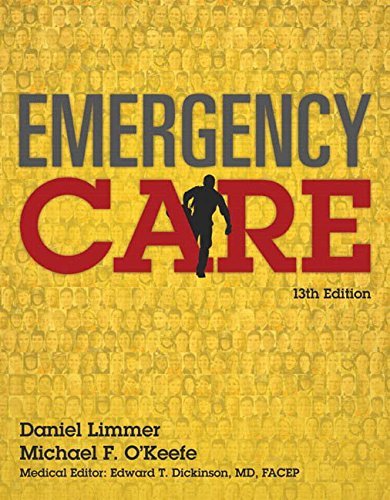
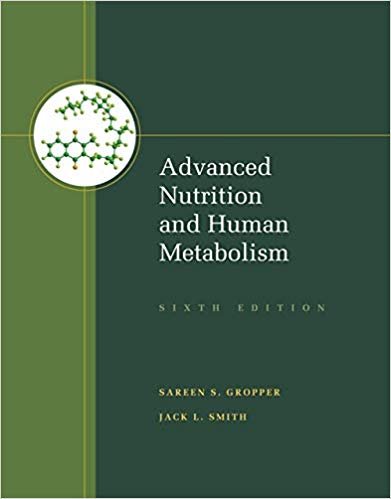
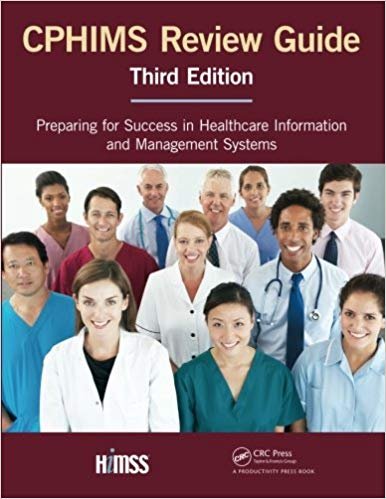
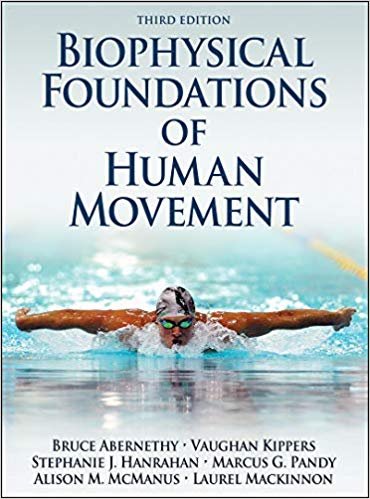




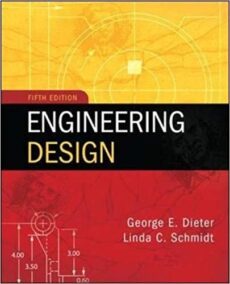


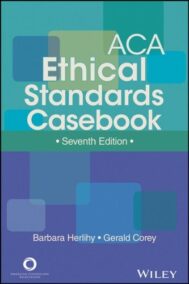
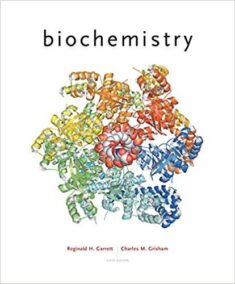





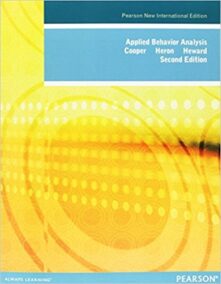
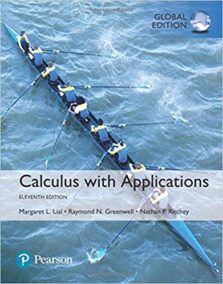

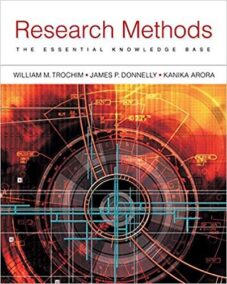
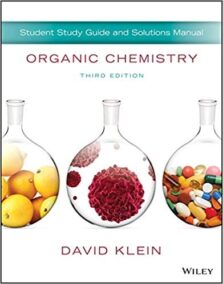
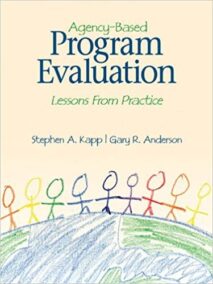
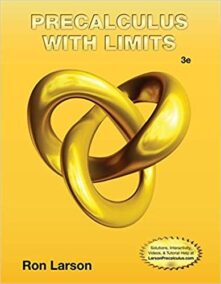


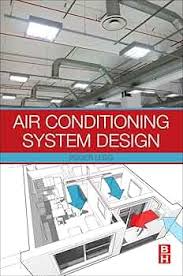



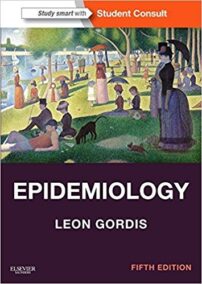

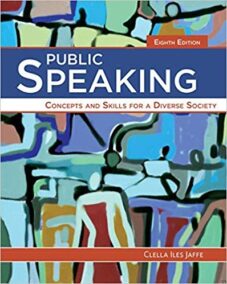
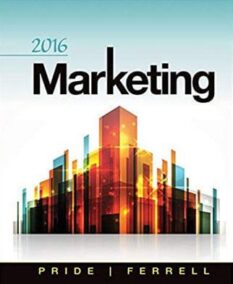
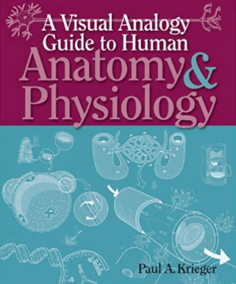

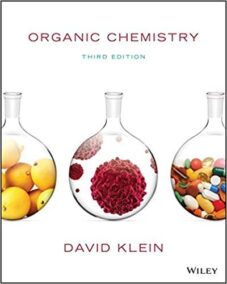
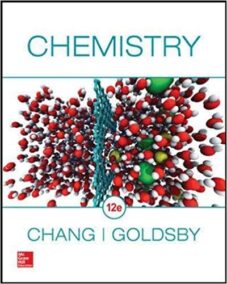
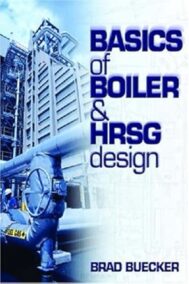







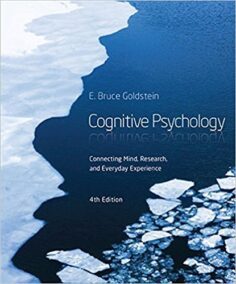
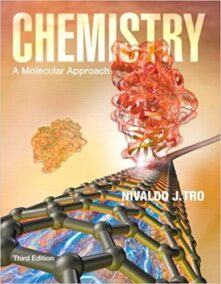
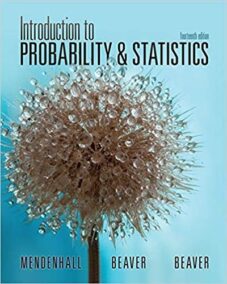

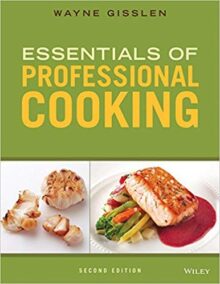










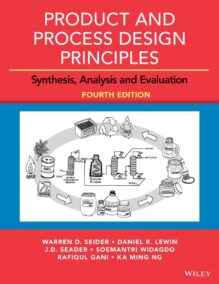



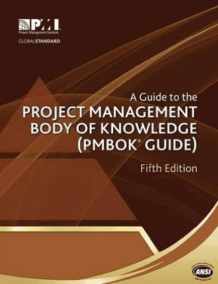
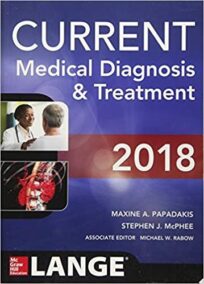

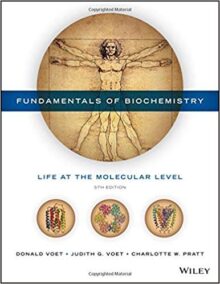


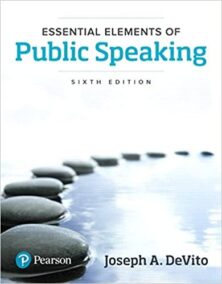

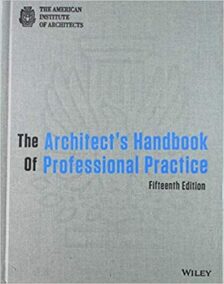
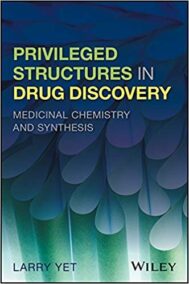

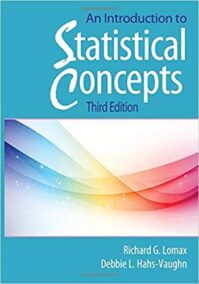
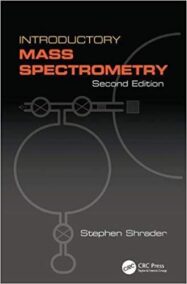


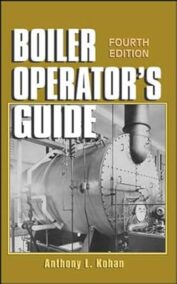



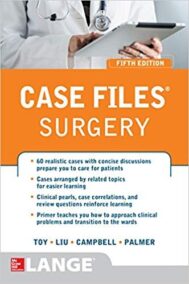
Reviews
There are no reviews yet.